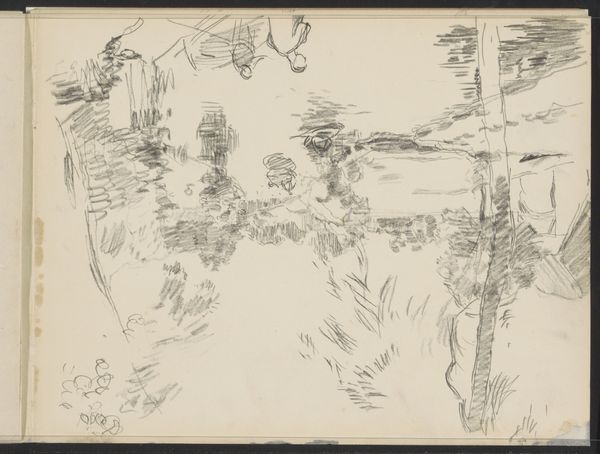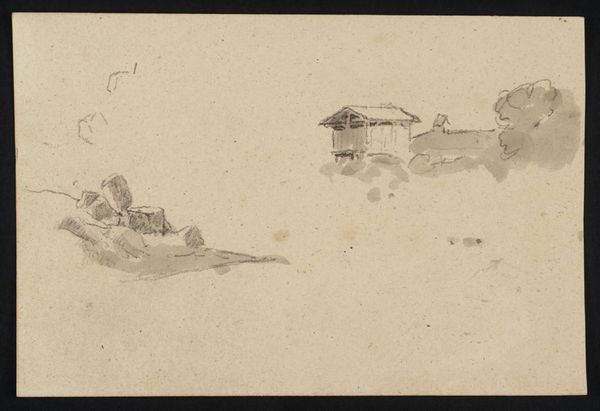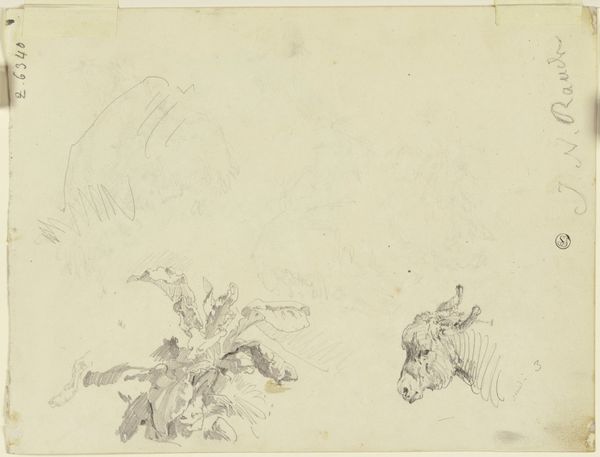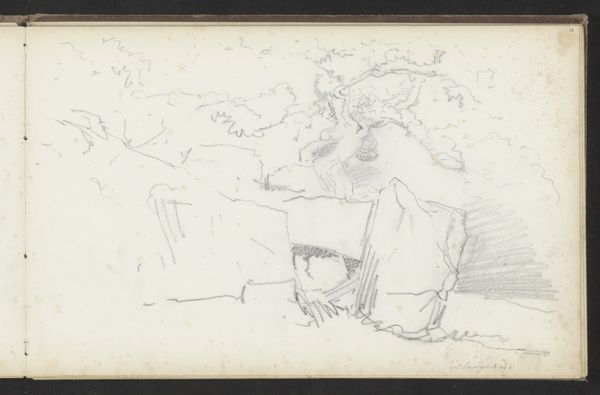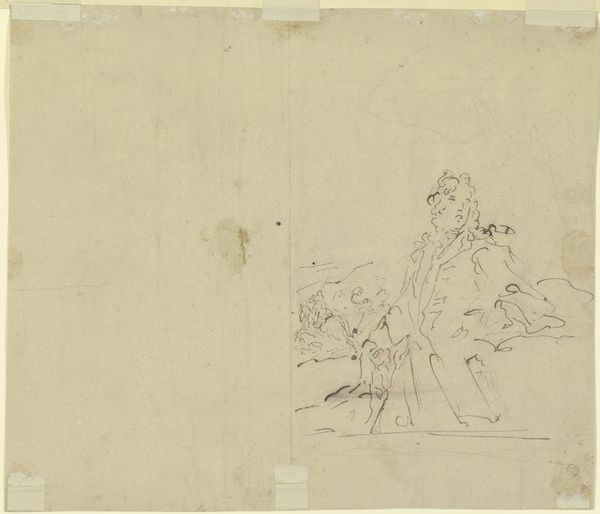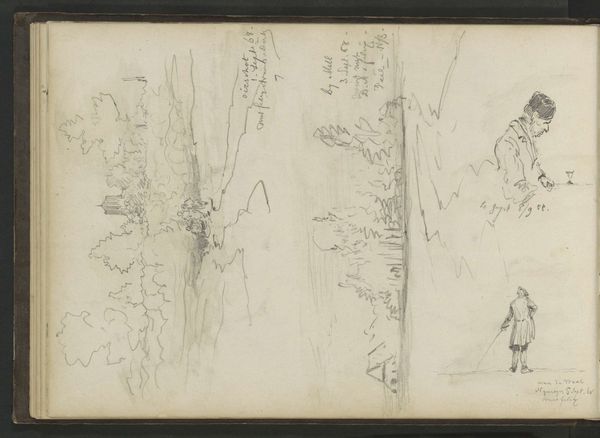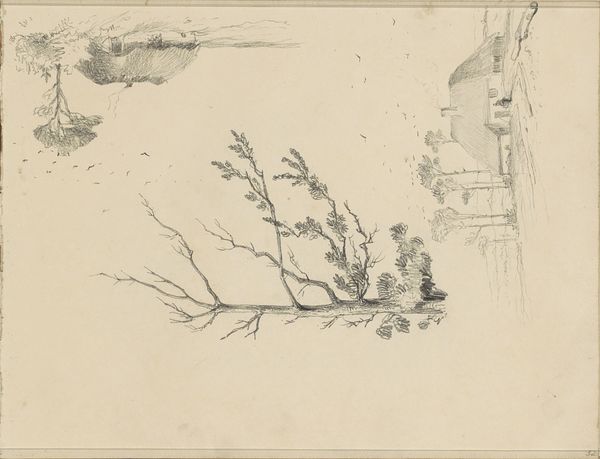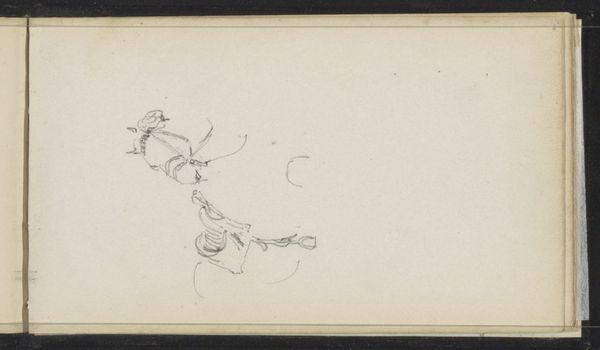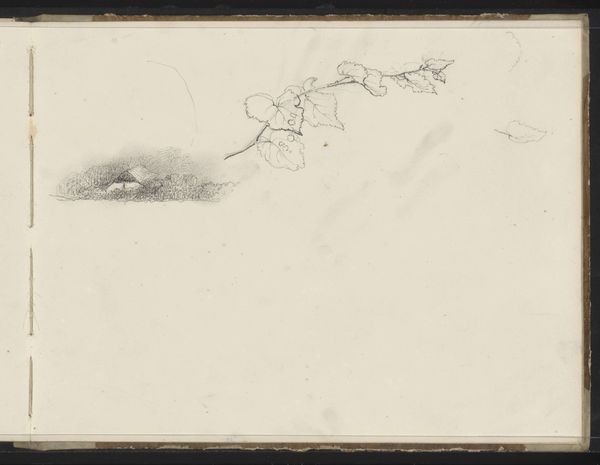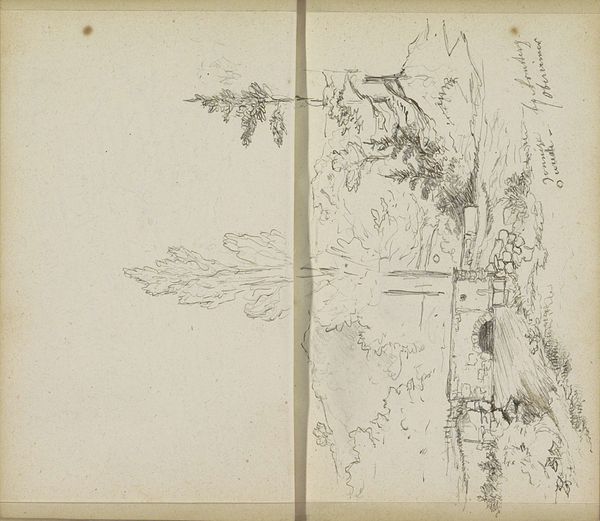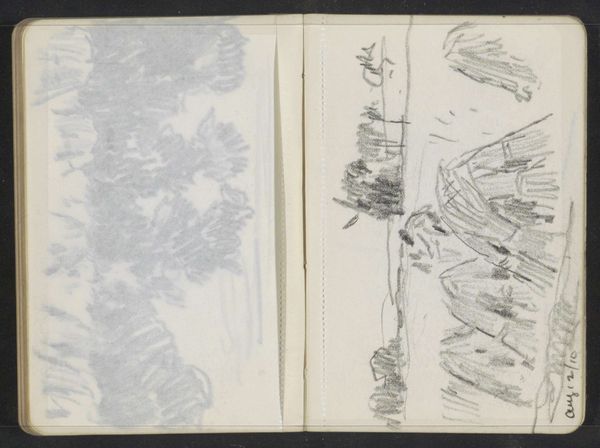
Copyright: Rijks Museum: Open Domain
Curator: There's an almost melancholic quietude in this sketch. Editor: It's a pencil drawing entitled "Two Boys Leaning on a Fence Near a Tree" by Willem Bastiaan Tholen, dating from somewhere between 1870 and 1931. You can find it here at the Rijksmuseum. For me, it feels less like a finished piece and more like a page torn from a sketchbook. Curator: Absolutely. Tholen’s use of pencil on paper speaks to an intimate engagement with his immediate environment and is, for me, evocative of the artist at work. We can see him work through these scenes with the series of thumbnail drawings on the page; this is about process and working through composition and perspective. Editor: I'm interested in the image of these two young figures by a fence, suggesting ideas of boundary, of being both inside and outside some societal construct. This piece is set in the pastoral Dutch landscape of the late 19th century. What narratives were being constructed around boyhood and nature at that time? What access did these children, who are assumedly white and likely working-class, have to leisure or creative activities in the natural world? Curator: Precisely, and the medium here is pivotal. Pencil—a readily available and relatively inexpensive material—makes art accessible in ways that, say, oil paints on canvas do not. The very accessibility speaks volumes about artistic creation. Editor: And what about the tree they're leaning on, Curator? Note its positioning, which nearly splits the page, literally drawing our attention to notions of rootedness, nature as refuge, and how these ideas reflect social values and environmental issues during this historical context. This also might give way to thinking about childhood during the beginnings of an industrial period in Dutch history, as well. Curator: Yes, seeing the landscape as something deeply interconnected with labor practices and the means of material production encourages a vital dialogue, Editor. Editor: Ultimately, this glimpse into the artist's practice—where environment and the image of children intersect—asks us to reflect on access, representation, and the intertwined history of people, art, and place. Curator: Well said. The raw honesty of this study offers such great insights into art-making and society, when we think of medium, methods, and makers.
Comments
No comments
Be the first to comment and join the conversation on the ultimate creative platform.
